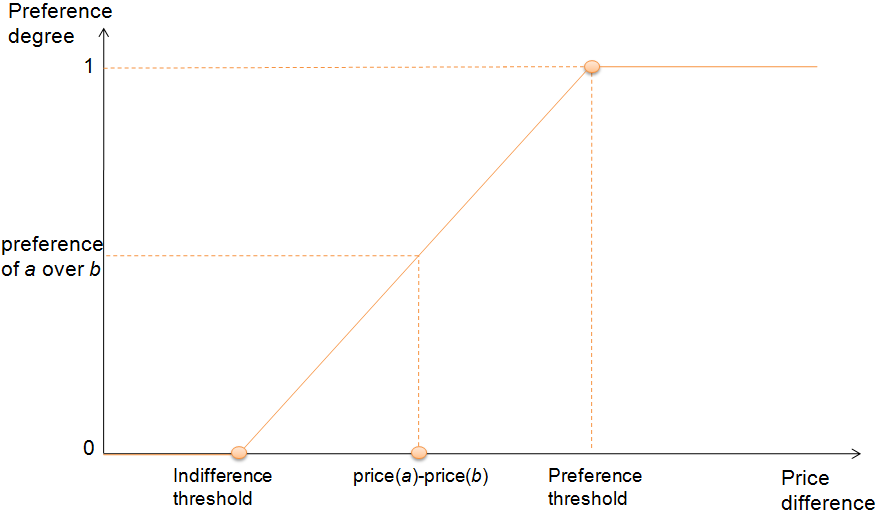 English
English Français
Français
Defining Preference
When making pairwise comparisons, the alternatives are not directly scored according to their performance. They are compared to the other alternatives, in pairs. In the PROMETHEE methodology, "preference functions" are used to compare alternatives. This is part of the preference modeling. There are different shapes that are proposed in the model.
When you compare two alternatives for a specific criterion, you will observe a difference. Let us consider a price criterion. If you compare two alternatives a and b on the price criterion, one will probably be cheaper than the other and you will prefer it.
The point is that the cheaper one alternative is, the more you will prefer it over the other. A preference function transforms a difference of performance between two alternatives into a preference degree. It includes two parameters:
- Indifference threshold: is the value under which the difference in performance is not important (e.g. an insignificant difference of price). Above the indifference threshold, you begin to prefer the more efficient alternative.
- Preference threshold: is the value beyond which you preference is strong. The preference degree is maximal beyond this threshold.
In the illustration hereunder, the difference of price between a and b is between the indifference and the preference threshold. Therefore, the preference for a over b exists, but is not maximal.
Pairwise comparisons are recommended when you judge that the score of the alternatives depends on the other alternative's performances.

